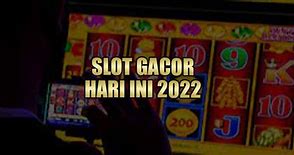
Pengertian Sex Education Menggunakan Bahasa Inggris Dan Artinya
The Healthy Youth Act California
The Healthy Youth Act in California, a department of Education mandate on January 1, 2016, requires school districts to provide students with integrated, comprehensive, accurate and comprehensive health and HIV prevention education from trained instructors at least once in middle school and once in high school.[39]
The purpose of the act is to provide comprehensive, accurate and unbiased sexual health and HIV prevention education.[40]
Preventive education must meet all requirements of the law except for the requirements for specific contents of grades 7 to 12. All "education on human development and gender, including education on pregnancy, contraception and venereal diseases" (EC 19 51931(b) is by definition a comprehensive sexual health education and should be satisfied, regardless of what schools call it by name. HIV prevention education is defined as "the nature of HIV and AIDS, the methods of transmission, strategies to reduce the risk of HIV infection, and guidelines for social and public health issues related to HIV and AIDS" (EC 551931(d).[40]
The law has five main objectives:
Sexual education exemption
Just as teaching methods and curricula vary by state, excusal from sex education also varies by state. States may have an opt-out or opt-in policy. In some states, students can opt out of receiving sexual education without specifying a particular reason. In other states, students can only opt out for religious or moral reasons. In an opt-in provision, parents must actively agree to allow their children to receive sex education prior to the start of the sexual education.[5]
Kosakata Bahasa Inggris Berawalan Huruf J
Kosakata Bahasa Inggris Berawalan Huruf S
C. Memberikan Instruksi Spesifik
Berikut beberapa kata dan kalimat yang berguna untuk mengarahkan petunjuk arah di jalan. Mungkin Anda sedang membantu pengemudi, atau seseorang yang menghentikan Anda untuk menanyakan arah.
Kita sering mengacu pada landmark saat kita memberikan arahan untuk membantu orang lain. Ini bisa merupakan tempat-tempat di kota, seperti bioskop, bank, halte bus, dll. Mereka juga bisa menjadi bagian dari sistem jalan raya. Berikut beberapa istilah umum:
Kosakata Bahasa Inggris Berawalan Huruf B
BACA JUGA: Apa Itu News Item Text? Pelajari di Sini Selengkapnya!
Kosakata Bahasa Inggris Berawalan Huruf U
Setting and aesthetics
The setting of Sex Education appears to be modern-day Britain, in the fictional village of Moordale, with various elements that serve to place the show in an uncertain time and location. Modern technology, such as smartphones, exists, but the show features very few cars from after the 1990s, with most cars featured ranging from the 1970s to the 1990s. Police cars seen during the finale of series two appear to follow 1990s aesthetics rather than modern-day police cars. The show heavily features older technologies such as CRT televisions and dated household appliances. The décor of the Groffs' house is reminiscent of popular 1970s décor; Maeve's caravan is typical of the 1990s–2000s; and the Milburns' house is a more modern décor with a modern, "American-style" fridge. Moordale Secondary School shows some elements of UK secondary schools but also has a more American high school image. According to showrunner Laurie Nunn, the show's aesthetic is deliberate and an homage to the 1980s films of John Hughes.[25]
On 2 January 2019, the official trailer for the series was released.[26]
On 17 January 2019, Netflix announced that the series was on pace to have been streamed by over 40 million viewers within its first month of release.[27] According to Netflix Top 10 global viewership, Sex Education was watched for over 447,750,000 hours between 12 September and 24 October 2021.[28]
On July 15, 2022, a manga adaptation illustrated by John Tarachine began serialization in Kadokawa Corporation's Comic Bridge online manga magazine.[29]
Review aggregation website Rotten Tomatoes reports that 91% of 80 critic ratings were positive for the first series, with an average rating of 8.10/10. The website's critical consensus reads, "Bawdy, heartfelt, and surprisingly wise, Sex Education is a raucous romp through a group of teenagers whose sexual misadventures are so thoughtfully rendered, adults could learn a thing or two from them."[30] Metacritic calculated a weighted average score of 79 out of 100 from 19 critics, indicating "generally favourable reviews".[31]
On Rotten Tomatoes, the second series has an approval rating of 98% with an average rating of 8.30/10, based on 57 reviews. The critical consensus reads, "Sex Education's sophomore season definitely has more going on, but by treating each new subject with care and humour, it leaves plenty of space for its characters to grow."[32] On Metacritic, the series has a score of 83 out of 100, based on reviews from 11 critics, indicating "universal acclaim".[33]
On Rotten Tomatoes, the third series has an approval rating of 98% with an average rating of 8.50/10, based on 42 reviews. The critical consensus reads, "With a seemingly endless desire to dive deeper into its characters paired perfectly with its talented ensemble, Sex Education's third season is a masterclass in brutally honest, brilliantly heartfelt comedy."[34] On Metacritic, the series has a score of 83 out of 100, based on reviews from 11 critics, indicating "universal acclaim".[35] The third series won Best Comedy Series at the 50th International Emmy Awards.
On Rotten Tomatoes, the fourth series debuted with an approval rating of 91%, based on 44 reviews. The critical consensus reads, "As sweetly empathetic and inclusive as ever, Sex Education's final season serves as a bittersweet -- but largely satisfying -- farewell."[8] On Metacritic, the series has a score of 70 out of 100, based on reviews from 17 critics, indicating a "generally favorable" reception.[36]
Sexual content in the media
Since 1997, the amount of sexual content on TV has nearly doubled in the United States.[43] Additionally, a study done in 2008 showed that nearly 40% of popular music lyrics contained sexual references which were often sexually degrading. These lyrics were also often accompanied with mentions of other risk behaviors, such as substance use and violence.[43]
Teens (ages 13–15) in the United States, use entertainment media as their top source for education in regards to sexuality and sexual health. Additionally, a study found that 15–19-year-olds in the U.S use media far more than parents or schools to obtain information about birth control.[43] Some studies have found that, "very few teen television shows mention any of the responsibilities or risks (e.g., using contraception, pregnancy, STIs) associated with sex and almost none of the shows with sexual content include precaution, prevention, or negative outcomes as the primary theme."[43] Television shows 16 and Pregnant and its spin-off, Teen Mom, which first aired on MTV in 2009 received major disapproval from some parents as they thought the shows glamorized teen pregnancy and motherhood. However, 16 and Pregnant actually led to a 4.3 percent reduction in teen pregnancy, mostly as a result of increased contraceptive use.[5] In contrast, other data shows that exposure to high levels of sexual content on the television causes adolescents to have twice the risk of becoming pregnant in the following three years, compared to those who were exposed to low levels.[43]
The film Mean Girls, directed by Mark Waters shed light on the state sex education in some parts of the United States. In the film the health instructor states, "At your age, you're going to have a lot of urges. You're going to want to take off your clothes and touch each other. But if you do touch each other, you will get chlamydia and die." This line is meant to be satirical, but it illustrates common flaws within sex education in the U.S. It depicts simplistic descriptions of sexual activity and implementation of fear without any legitimate basis.[5]
Comprehensive sex education is the main topic in the documentary The Education of Shelby Knox (2005) about Lubbock, Texas, which has one of the highest teen pregnancy and STD rates in the nation; the "solution" to which is a strict abstinence-only sex education curriculum in the public schools and a conservative preacher who urges kids to pledge abstinence until marriage.
In 2013, How to Lose Your Virginity was released, a documentary that questioned the effectiveness of the abstinence-only sex education movement and observed how sexuality continues to define a young woman's morality and self-worth.[44][45] The meaning and necessity of virginity as a social construct is also examined through narration and interviews with notable sexuality experts, such as former Surgeon General Joycelyn Elders, "Scarleteen"[46] creator and editor Heather Corinna, historian Hanne Blank, author Jessica Valenti, and comprehensive sex education advocate Shelby Knox.
Not only have films portrayed sex education, but so has social media. Platforms such as YouTube, Facebook, and others are used as a tool to uplift the narratives of marginalized communities such as persons of color and LGBT persons in hopes to "strengthen sexual health equity for all."[36]
As a result of the mass amount of sex content in media, media literacy education (MLE) has emerged. It was created to address the influence of unhealthy media messages on risky health decisions, such as intention to use substances, body image issues, and eating disorders.[43] A study analyzed the effectiveness of a teacher-led MLE program, called Media Aware Sexual Health (MASH), which provides students with accurate health information and teaches them how to apply that information to critical analysis of media messages. This comprehensive sex education resulted in increased intentions to talk to a parent, partner and medical professional prior to sexual activity, and intentions for condom use.[43]
Due to knowledge gaps in most sex education curricula for teens, free online resources like Sex, Etc., Scarleteen.com, and teensource.org[47] have been created to promote comprehensive, inclusive, and shame-free sex education for teenagers.
This article incorporates text from a free content work. Licensed under CC-BY-SA IGO 3.0 (license statement/permission). Text taken from Emerging evidence, lessons and practice in comprehensive sexuality education: A global review 2015, 14, 15, 25, 29, UNESCO, UNESCO. UNESCO.
Saat Anda berada di suatu tempat entah itu kota atau negara yang tidak Anda ketahui. Anda pasti dengan mudah tersesat di beberapa tempat selama perjalanan, walaupun Anda memiliki peta. Jadi, sangat bermanfaat untuk mengetahui cara memberi dan memahami petunjuk arah dalam Bahasa Inggris sehingga Anda bisa mencapai tujuan Anda. Anda juga dapat menyampaikan arahan sendiri kepada kolega asing.
Jadi kata dan frasa apa yang dapat membantu Anda memberi dan menanyakan arah? Baca terus untuk mencari tahu!
Pertama-tama, Anda perlu mengetahui beberapa kosakata dasar. Kata dan ungkapan terpenting adalah:
Saat Anda bertanya arah, ingatlah di atas segalanya untuk bersikap santun. Jadi mulailah dengan mengucapkan salah satu frasa berikut:
– Excuse me, could you tell me how to get to …? (Permisi, bisakah kamu memberitahuku bagaimana menuju ke …?)
– How do I get to …? (Bagaimana cara saya ke …?)
– What’s the best way to …? (Apa cara terbaik untuk …?)
– Where is …? (Dimana …?)
– Excuse me, do you know where the … is? (Permisi, apa kau tahu dimana … ini?)
– Are we on the right road for …? (Apakah kita berada di jalan yang benar untuk …?)
– Can you show me on the map? (Bisa tunjukkan aku di peta?)
Awards and nominations
Sex Education is often noted for its unique visual language and aesthetics, which employs American teen culture tropes into a British setting.[56][57][58] Inspired by the filmography of John Hughes and the teen comedies of the 1980s, the series incorporates several elements, motifs and designs evocative of those films, and American teen media in general, such as students idling around lockers, non-uniform school dress codes and students sporting letterman jackets.[59][60][61][62][63] Series director Ben Taylor said: "When [Laurie Nunn] was writing the script and the world, they tended to be on the whole more American references to the school experience I've seen in film and TV than any British ones. There was a tone in the script that was about warmth and positivity. It was just a sort of rendering the school experience as a positive thing, which we tend not to do in this country. I think it also visually elevates it to a slightly more expansive canvas".[64] Anderson said that the US cultural references were intended to appeal to American audiences.[63] On the retrograde setting, notably reminiscent of the 1980s, Taylor explained: "It was always contemporary ... It was just something we chose not to foreground so much, so that it wasn't about a generation of kids who are obsessed with their phones."[64]



